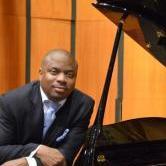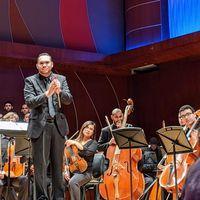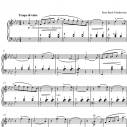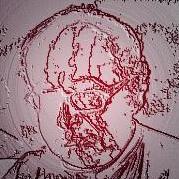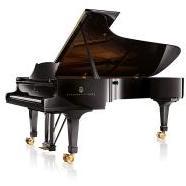Search the Community
Showing results for tags 'chamber'.
-
Up until recently I was in the process of making music for a short film. The film was about a girl who gains "superpowers" from an old tree, and with these superpowers she's able to save her dying father and the forest. When i sent them my music they immediately said that they hade chose to pursue other options with the motivation being the music was too different from what they had in mind. I'd love to receive some basic feedback on this short piece. I'd like to know wether if it's straight scraggy or if it's alright, if there's something missing and what that could be. I'll be glad for any opinion on my work. I have some confidence in my ability to create music, but since I'm working by myself I never really have any idea what others think, so just a couple of words of opinion would make my day. Thanks 😊
- 3 replies
-
- percussion
- strings
- (and 4 more)
-
A little slightly more contemporary piece for solo flute that I have been working on for a while. In the first movement, I make use of a ‘filtering’ technique to develop the material; I began the piece by writing out a progression of modes, a few notes altered by a few semitones each time, which I work through to gradually modulate (with some exceptions!). I went for senza misura for this movement as I was looking for a more contemplative and tranquil tone, hence the title 'Penseroso', and to give performers as much space and creative opportunity as possible, which I something I always strive for. I contrast this with the virtuosic and frantic nature of the second movement ‘Scherzando’. I began by planning a sequence time signatures to be repeated, in such a pattern that an audience would be oblivious, to convey this freneticism. I develop this sequence; I designed an exchange in length within the piece of the high, loud, staccato sections and low, softer legato sections, in which the staccato sections gradually grow shorter as the legato sections grow longer, until roughly halfway, when the staccato sections lengthen again, and the legato sections shorten (I hope I worded that clearly enough!). I am particularly pleased with the sudden shock ending of this movement, designed in contrast to the soft a niente’ of the first movement. I managed to persuade a flautist friend to record this for me, and they have done an excellent job. I hope you enjoy the sounds of a real instrument, unlike last time! Any feedback and suggestions much appreciated.
-
Hi everyone! After 9 months, extensive editing and reworking, I have finally finished my full quartet! I tend to compose based on motifs and melodies, so I tend to reuse my motifs and musical ideas throughout the piece with the intention of a coherent flow throughout this quartet. The order is as follows: 1. Allegro Con Spirito in 12/8 time (7'45") Form: Conventional Sonata Form Introduction in D Major -> 1st Subject in D Minor -> 2nd Subject in A Minor -> Development and New Material in A Major -> Recapitulation of 1st Subject in D Minor -> Coda using fragments of 2nd Theme in D Minor The opening movement of the piece, the first movement sets the tone of the piece with its flowing nature, seamless transitions and exploration of its two subjects, with motifs used to keep its coherent flow. The piece starts off with a slow introduction further elaborated on in the 4th movement. I decided to use a early Romantic style of composition with 20th century elements. Dialogue was emphasised throughout the movement with a lot of imitation and antiphonal texture between instruments used throughout the piece. In addition, I explored the varying planes of tones throughout the piece, from choral-like segments to more polyphonic areas. Motifs used: 1-quaver-4-semiquaver rhythm, Melodic pizz. motif, offbeat quavers, Chromatism 2. Adagio Molto Rubato in 2/4 time (11'32") Form: Free Form The slow movement of the piece, the second movement sets out by exploring the contrasts between varying emotions and textures and the use of solo instruments in the scoring of a string quartet, where every instrument has their own cadenzas and solos dotted throughout. Each instrument was given its time to shine and play its own solos and melodies, with interspersing those moments with polyphonic instrumentation and texture typically associated with the quartet. Each main melodic phrase starts off with the fast lively piu mosso section before going into more sentimental, slower sections of the piece. The theme of the piece and main melodic material in the movement recurs periodically throughout the piece with variation and changes in instrumentation and tone colour. I also used a relatively contemporary technique where different parts of the melody and countermelody are played by different instruments in the same phrase. Motifs: Tremolo, Dotted-crotchet-2-semiquaver rhythm, Solo cadenzas and melodies, offbeat semiquavers 3. Scherzo, Molto Vivace in 3/4 and 4/4 time (4'59") Form: Rondo Form A Section in D Minor -> B Section in F Major/B-flat Minor -> A Section in D Minor, -> C Section in F Major -> Cello Cadenza in D Minor -> A' Section in D Minor -> Coda in D Minor The Scherzo of the quartet heavily makes use of quartets and further explores the fugue and unconventional choral-like textures for the quartet. With heavy use of the lively and catchy theme, interspersed with the chromatic fugal style of the other sections, it creates sharp contrast and variety in sound. I utilised very lyrical and easy to latch onto melodies to make this rondo much more memorable and enjoyable, with its fiery unison main theme and its fast liveliness especially accentuated by its running notes as countermelodies. Motifs used: Chromatism, quaver-2-semiquaver rhythm, ascending scales 4. Adagio - Allegro Con Fuoco in 4/4 time (8'07") Form: Rondo Form Introduction in F Major-> A Section in D Minor -> B Section in D Minor -> A Section in D Minor-> C Section in D Major -> D Section in A Minor -> Brief Recap to Introduction -> B Section in D Minor -> Combination of C and D Section in A Minor -> A Section in D Minor -> Coda in D Minor Th final movement of the quartet is very virtuosic and technically challenging with its fast running notes and sudden tempo changes, with the emphasis of unpredictability, rage and contrast as I was composing in mind of the COVID pandemic. The theme throughout remains constant to provide a sense of grounding in an otherwise chaotic and unpredictable piece, with the 3 other main melodic ideas varied through variations and instrumentations. It heavily uses cyclic form in its introduction and coda, bringing ideas from the first and third movement into the forays of the final movement. Motifs: Chromatism, Running Note Scales, Quaver-Crotchet-2-semiquaver rhythm, quaver pizz., melodic motif bridging sections, Arppegio running Notes I would greatly appreciate any feedback given towards the composition as it helps me improve my skill in composing. Feel free to leave suggestions in the comments. Thank you!
- 5 replies
-
- 1
-

-
- string quartet
- chamber
-
(and 1 more)
Tagged with:
-
Hi everyone! This is my first attempt at a string quartet. It is the first movement of a larger string quartet that I intend to make in D Minor. It would be nice if you could review it and leave some feedback. Thank you! (really sorry I only have the midi mockup, haven't got it performed yet) link: https://youtu.be/yVSecRZSyCg
-
Here is my new piece, a Piano Chamberto (Chamber concerto), for Piano, Oboe, Clarinet, Horn and Bassoon. This has been a long project, my most ambitious piece to-date in terms of complexity - I'm really glad to have finished it at last! 🙂 The goal was to use a format similar to Classical-era Piano concertos, but with a reduced set of instruments. Please let me know what you think! Dan
-
A two minute score for chamber, written to accompany underwater and coastal footage. Hope you like it! These are fun to put together 🙂 Would welcome any and all feedback!
-
“You have no chops!” Those were the illustrious words by my professor, Bright Sheng, during only my second lesson with him. I was speechless. Who was I though to argue with this award-winning composer? I had to be humble and just learn. Then the unthinkable happened. The Composition Department chair, William Albright, had suddenly died. He was key to me being accepted into the program. A great composer, a wonderful person, gone. It was only the third week of school. Amongst the big shuffle of students in the composition department, I was then switched to Prof. James Aikman’s studio. After a debacle of a start, Prof. Aikman would be the professor at the University of Michigan who also had the most profound impact on my technique. This would coincide with him always pushing me to write more chamber music. It wasn’t something that came to me. I generally wrote large works; it’s what I listened to daily. My CD playlist was Beethoven symphonies, Strauss tone poems, Respighi’s trifecta, and John Williams’ scores. I did eventually (per my grade) write a chamber work. I decided on a “flute trio” for my friends: flautist Susan Giroir, clarinetist Monica Berckley (Jacobsen), and cellist Leo Eguchi. Surprisingly, it was well-received. Even Prof. Sheng smiled and only said one word to me. “Chops!” Still, I wasn’t happy with this piece. After that premiere, I wouldn’t listen to it for another 22 years. Over time, I would often listen to the chamber music of Shawn Okpebholo, Jason Woodruff, Blaire Ziegenhagel, George Morrison, and James Grant. Their music would habitually encapsulate my mind. They made such beauty with small groups. Eventually, it brought me to revise ‘The Vivid Dawn.” Coming from the piece’s original source, this composition draws from the sunrise view from Belle Isle overviewing the city of Detroit. The “B” section is watching the view from my home in Russell Woods. As the “A” section returns, the “C” pays more attention to the birds on the beach playing. The “D” section is the traffic trying to get on Belle Isle as the weather warms and all its congestion. The final A is the journey home after an eventful day.
-
Ninth Plant New Music is excited to announce the 35th annual Suzanne and Lee Ettelson Composer’s Award. An award of $1,000 will be given for a new chamber work. The winning work will be performed in the San Francisco Bay Area during Ninth Planet's 2020-21 concert season. Works not awarded prizes will also be considered for programming. This award is excellent for young and emerging composers! Past winners have included now prolific composers such as Mason Bates, Jennifer Higdon, and David Lang. For details and to enter, please visit our website: http://www.ninthplanetmusic.org/ettelson.html Entries may be scored for one to five performers plus conductor. Performers shall be drawn from the core instrumentation of the ensemble Ninth Planet (one player each): flute/piccolo/alto flute clarinet/bass clarinet trombone electric guitar piano violin cello double bass Scoring may include one or two instruments not listed above, including voice(s) and electronics, but must include at least one member of the core instrumentation. There is no limit to piece length. Entry deadline is Jan. 19, 2020.
-
- composition
- music
-
(and 4 more)
Tagged with:
-
I started this quintet with the intention of entering this into a competition -so, I've been working pretty intently on it (to the point that it's all I think about). Here are the first 2 movements: 1. Andante: The first movement serves as a sort of introductory movement. The movement utilizes the short two bar theme presented in the opening (this theme also permeates large portions of the work as a whole). The theme is presented in all voices, leading to the establishment of a 'hopefully' hypnotic pattern -through which I play with the theme and introduce contrapuntal material. The structure is ABA'. 2. Allegro Con Fuoco: This is the movement so far that I've spent the most time on -and this is revision number 4. The opening two bars introduce an ostinato pattern that is taken up by ALL instruments within the quintet. This movement is meant to be faster than what I have set. I've slowed it down to give more attention to detail. 3. Adagio Semplice: To compliment the 2nd movement -and in stark contrast texturally- this movement is more of a mediation and prayer-like movement. The movement is slow and contemplative. At any rate, I'll post the final 2 movements once I've finished them. Hope you all enjoy these experiments.
-
Hey all, I am working on a collection of small pieces, preferably 5, based on short stories (hence the name). I made a rough draft of the first one and was wondering if it was an idea worth continuing. Any comments would be helpful! (Just added multiphonics to the trumpet part, anyone know if the part is playable/ how it would sound in real life?) https://musescore.com/user/20408661/scores/5815887 Thank you!
-
The piece is based on a European version of the second part of a Jewish Chant called "These Candles". It is said on the holiday of light which is... in about a month and a half from now. Titled "a Prayer for a Light Long Forgotten" the piece is meant to take the listener into a dark night on a pagan ancient tribe, a night in which from darkness, by prayer, grows a big light (say, they light a great bonefire and dance around it). Thus, I try to make the piece go from darkness to light using scale, chords colors, register, tempo etc. Please listen and tell me what you think of it, any reviews are welcome, especially the critical ones.
- 4 replies
-
- chamber
- story-telling
-
(and 1 more)
Tagged with:
-
Hey everyone, Here is the piece I composed this semester for my composition lessons at university. It's about 18 minutes long, so if you only want to listen to and review a small portion, that's totally fine. This piece is still under revisions, so any feedback is welcome. Thanks! https://www.youtube.com/watch?v=C2Z780ZKZIY
- 3 replies
-
- large ensemble
- violin
- (and 6 more)
-
There's so much to be said -with sometimes not enough time to say it. The same is true of music. So many ideas, and yet... we're left with so much longing after each piece. This is the idea behind this work. The ideas are pretty basic. There's some dabbling in serialism, free atonalism, combining tonal systems with serial rows, and a little more. NOTE: The scores aren't that well done. I'm using Flat (a free notation software) since I can't install Finale or Sibelius to my chrome book -and I am moving the pieces from paper to there. I'll be updating the scores once my new laptop arrives and I can get Sib installed again. Until then, I've done my best in adapting to Flat. It's not a bad notation software (though the midi sucks). My apologies! Hope you enjoy!
- 5 replies
-
- modern
- violoncello
-
(and 4 more)
Tagged with:
-
Hey gang, I posted this piece earlier when I was in the middle of writing it. Here is the finished product. This is the piece I composed over the spring semester during my first semester of composition lessons at the university I am attending. Please enjoy and let me know what you think! (P.S. Evidently when you use Petrucci font in Finale, the tremolo stops working, so that's why it appears in the score, but is not in the MP3 [do the midi problems ever end...?])
- 1 reply
-
- string quartet
- strings
-
(and 7 more)
Tagged with:
-
Hi all 🙂 Here's a new piece (adagio) to test EWQL Symphonic Orchestra's 4 violins and 3 cellos sections. Just let me know 🙂
-
Work in progress! Well... so this year is my graduation recital and I wanted to finish with something "big" (Yeah, some weirdly restriction that limits the amount of musicians we can have on the recital) Scored for a chamber Orchestra. Every comment is helpful! 1 Flute 1 Oboe 1 Clarinet 1 Bassoon 2 Horns Strings
-
Hi fellas, Normally, I only write music for piano. It’s the only instrument I have and the only instrument I can play - but recently I have decided it would be fun to take on the project of writing a Piano Quintet to help introduce me to the world of Chamber music. Unfortunately, as I have established, I have no experience writing for stringed instruments and I have no idea how to approach the task. If there are any tips and tricks anybody could give me about writing for strings and for writing chamber music. Thanks a million! James
-
Short piece for three woodwinds.
-
This is a tuba concerto with piano I have been working on for quite a while. Originally this was meant to span multiple movements but I decided to run the movements together and give it cyclic properties. The sustain pedal on the piano is just holding out on this midi rendering so it gets muddy and the 8va markings cause both staves to move up or down an octave for whatever reason even if I didn't write it like that. Anyways, I hope you enjoy and criticism is welcome.
-
While cleaning up my various notes and sketches from my computer, I came across this piece I did a while back. I've long been a fan of "Appalachian Spring", and in particular, the original version for chamber. I decided to attempt to use this type of ensemble but added horns oboe to have a full wind quintet. The second horn was for added color. It was more an exercise in smaller mixed group writing for me. Comments appreciated. Thanks Tim
-
Here's my first serious string quartet, recorded with electronic instruments so the dynamics are displayed very poorly. Separated in 5 small movements, with a backstory in the video description for whoever is interested.
-
This piece is one of my first composition for instruments. I think the instrumentation is quite unusual: 2 flutes, oboe, 2 trumpets, piano, cello. It is an early composition (I was 18, when I wrote that), but the chords and the melody have inspired me later, so this piece is quite important in my studies. What do you think about this piece? Please share me your thoughts. Thanks!
-
What instruments are in a standard String Quintet, Sextet, Septet and Octet. Is there a standard instrumentation?
- 1 reply
-
- instruments
- string
-
(and 1 more)
Tagged with:





